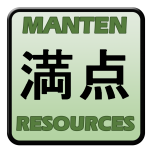Are you struggling with elective class enrolments? Feel like you are constantly fighting for support from the executive? Your problem may lie in differentiation – although not from the traditional perspective.
Differentiation is how we shape our teaching and learning activities to support the needs and interests of the students. Traditionally we focus on making materials accessible to students who are at different levels of understanding and ability at a given point in time. For example, the NSW syllabus groups content appropriate to mainstream, prior-learning and background student levels. In the Jblog textbook series, we differentiate questions at the green, blue and black level based on ski runs.
But what if we looked at differentiation from a different perspective?
I was recently inspired by Seth Godin’s book “This is Marketing.” In it, he writes:
It doesn’t make sense to make a key and then run around and looking for a lock to open. The only productive solution is to find a lock and then fashion a key. Its easier to make products and services for the customers you seek to serve than it is to find customers for your products and services. (pages 5-6)
How many of us are trying to sell a language program rather than creating a languages product that meets the needs of our key stakeholders? Do you even know what the needs and desires of your stakeholders are?
When I refer to stakeholders, I am considering the students, their parents, the school executive and the larger community. These stakeholder groups will influence to different degrees how relevant my languages product will be perceived. Some of you may argue that we shouldn’t have to do this, and that simply stating the many benefits of language learning should be enough. Seth Godin argues though, that “The status quo doesn’t shift because you’ re right. It shifts because the culture changes”. (page 122)
It is a mighty task to change the dominant culture of your stakeholders to align with a languages’ viewpoint. But it is less difficult to align your course with the dominant culture. How about differentiating your languages course to meet the needs and interests of those stakeholders? Can you differentiate to better reflect their values, rather than swim against the tide? One of our schools has a dominant culture that exults commerce and business. So we embraced that with a unit titled “The Intercultural marketing business case study”. Students learned about how marketing to a Japanese audience differs to an Australian audience. They learned how customer expectations of customer service are deeply embedded in the language and culture that we identify with. Those of you in NSW currently reprogramming for the new syllabus may like to embrace this shift in mindset as you develop new task-based programs.
We will be discussing this topic in more detail at our Noosa workshop July 13th. The extended workshop will give us time to look at examples of assessment tasks that align with different stakeholder values and dominant cultures. You can book online using Trybooking or email me at jblog1help@gmail.com to request an invoice for your school. We look forward to escaping the winter chill with you then.
Good luck with your programming!
